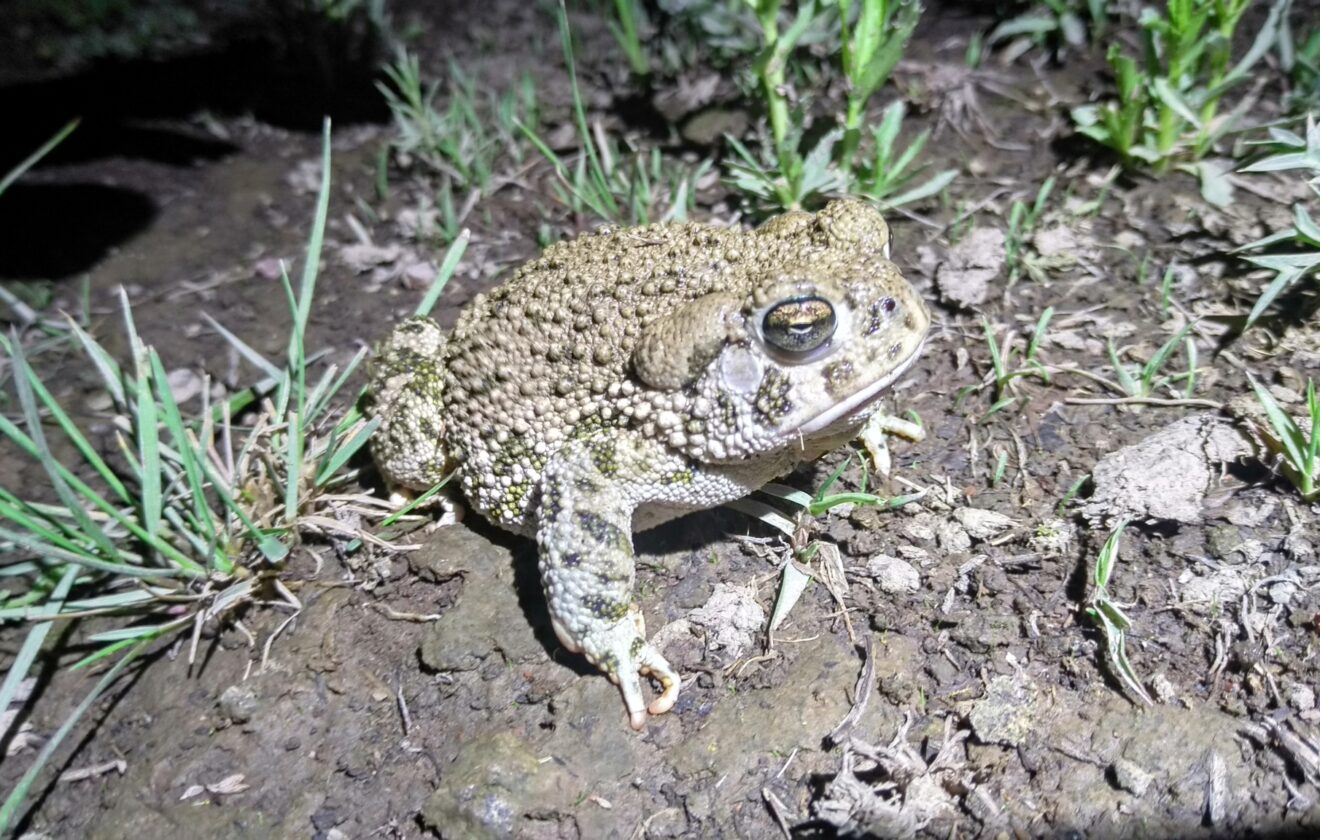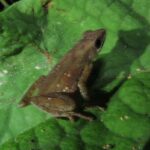- Anaxyrus compactilis: Discovering the Secretive Wonders of the Plateau Toad
- Taxonomy and Classification: Positioning the Plateau Toad
- Natural Habitat: Life Among Rocky Plateaus and Desert Streams
- Physical Characteristics: A Portrait of Subtlety and Survival
- Behavior and Life Cycle: Harmonizing with the Rhythms of Rainfall
- Ecological Role: Quiet Guardians of Ecosystem Balance
- Threats and Conservation Status: Navigating Human-Imposed Challenges
- Cultural and Scientific Significance: Emblems of Environmental Health
- Conclusion: Championing the Unsung Toads
Anaxyrus compactilis: Discovering the Secretive Wonders of the Plateau Toad#
In the heart of North America’s rugged and arid landscapes, a discreet and unassuming amphibian reigns quietly—an enigmatic little creature whose presence whispers tales of adaptation and resilience beneath moonlit skies. This elusive amphibian, the Plateau Toad (Anaxyrus compactilis), holds a fascinating story. Despite being relatively unknown to the broader public, its subtle existence reveals volumes about habitat conservation, ecological balance, and survival practices shaped meticulously through evolutionary time.
Compact, humble, yet invaluable in unraveling ecological mysteries, Anaxyrus compactilis reminds us how even the smallest and least conspicuous residents of the natural world profoundly impact ecosystem health. Let’s journey together into the rocky terrain and hidden waterways where this fascinating amphibian thrives, exploring its life story, ecological significance, and the vital conservation messages it quietly conveys.
Taxonomy and Classification: Positioning the Plateau Toad#
The Plateau Toad, scientifically recognized as Anaxyrus compactilis, belongs to the family Bufonidae, a globally widespread family known for their characteristic stout bodies, dry and warty skins, and distinctively recognizable hopping movement. Bufonidae, collectively known as true toads, comprises hundreds of species adapted to diverse global habitats, from equatorial rainforests to temperate zones and arid deserts.
Within this extensive and adaptive family, the genus Anaxyrus encompasses an intriguing collection of North American species. This group, once classified under Bufo, now clearly delineates these American toads as distinct in lineage from their European counterparts. Anaxyrus compactilis finds its closest relatives among species such as the Red-spotted Toad (Anaxyrus punctatus) and the Texas Toad (Anaxyrus speciosus), each exhibiting remarkable ecological abilities to survive challenging habitats, including semi-arid terrains.
The specific epithet “compactilis” fittingly hints at its relatively modest proportions, a nod to the unique adaptations that Anaxyrus compactilis possesses to thrive unobtrusively within its rugged environment.
Natural Habitat: Life Among Rocky Plateaus and Desert Streams#
To truly grasp the essence of Anaxyrus compactilis, one must venture across the sun-baked and windswept plateaus of the southwestern United States and northerly regions of Mexico. Here, rocky outcrops fringe gently flowing desert streams, and hardy vegetation punctuates an otherwise stark landscape.
Geographic Distribution#
The Plateau Toad predominantly occupies the Edwards Plateau and surrounding areas of central and southwestern Texas, extending down into the adjacent northern states of Mexico. Its range, while geographically limited, presents a uniquely challenging environmental tapestry, composed of scrublands, limestone canyons, ephemeral streams, and semi-arid ecosystems. Its existence here testifies to millions of years of niche specialization, where scars of geological upheaval and environmental turbulence set the stage for remarkable adaptability.
Habitat Preferences and Adaptations#
Unlike more notably aquatic amphibians, Anaxyrus compactilis thrives in seasonally arid landscapes intermixed with intermittent waterways and springs. Often hidden beneath rocks and nestled within deep earth crevices, these miniaturized sentinels of ecological resilience await the brief and precious rainfall that intermittently revitalizes their habitat.
The Plateau Toad’s survival strategy sharply hinges on its habitat choice. Rocky shelters and cryptic behavior allow the toads to minimize water loss, a necessity in their environment where drought defines lifestyle. Seasonal water presence punctuates its life cycle, sharply contrasting its quiet retreats with bustling breeding periods when toads gather around temporary pools or softly trickling streams.
Physical Characteristics: A Portrait of Subtlety and Survival#
Upon closer inspection, the Plateau Toad reveals subtle yet evidently masterful adaptations, each trait hinting at its quietly fierce commitment to survival. Measuring between 30 to 60 millimeters, it fits within the palm of the hand, its diminutive form camouflaged expertly against its rocky surroundings.
Appearance and Coloration#
The toad’s skin is a muted blend of earth tones—hues that reflect its gravelly dwelling. Shades of gray and brown interlace with subtle highlights of olive and rust, while a scattering of tiny black or dark-brown markings further enhances cryptic coloration. Perhaps its most distinguishing feature is the compact yet robust body, perfectly matching its Latin designation. Its stout build, muscular limbs, and pronounced, roughened skin grant it substantial protection and camouflage along the gravelly substrate and rock outcroppings.
Adaptations for Desert Resilience#
The skin of Anaxyrus compactilis is uniquely and purposefully toughened, rough and granular, providing defense against dehydration and predation. Not only does this granular skin efficiently retain moisture, but specialized parotid glands also secrete mild toxins that deter predators such as snakes and birds, providing an essential defense mechanism in a habitat wherein predators sweep mercilessly beneath the arid sun.
Behavior and Life Cycle: Harmonizing with the Rhythms of Rainfall#
In harmony with seasonal pulse and rhythm shaped by rainfall, the Plateau Toad’s life stages unfurl elegantly amid climatic unpredictability. Amidst this uncertain hydrologic dance, its behaviors become nothing less than a captivating survival symphony.
Feeding and Activity Patterns#
Primarily nocturnal, the Plateau Toad emerges under the shield of darkness, safeguarding itself against daytime heat and predation pressures. Its eyes, large and adapted to low-light conditions, scan intently for insects, spiders, and other terrestrial invertebrates upon which it depends. While lurking near sheltering rocks and vegetation, these skilled ambush predators patiently wait, snapping prey with swift movements bolstered by precision targeting and excellent sight sensitivity.
Breeding and Reproduction Strategies#
As heavy rains briefly transform previously dry streambeds, ephemeral pools soon resound with nuanced yet hurried symphonies of breeding males. Numerous males congregate in these temporary habitats, vocalizing with trills notably softer and less dramatic than many other amphibians yet undeniably enchanting and earnest. Females attracted to these temporary choruses deposit gelatinous egg masses underwater, ensures rapid egg-to-tadpole transition, given the transient nature of water availability.
The developmental speed of tadpoles into metamorphic juveniles is remarkably accelerated, sometimes lasting mere weeks—a tempo dictated strictly by the precarious odds that temporary pools may vanish altogether, ushering young toads swiftly toward terrestrial independence.
Ecological Role: Quiet Guardians of Ecosystem Balance#
Quietly, beneath moonlit skies and in subterranean concealments, Plateau Toads perform critical ecosystem functions. As insectivores, they control insect populations, indirectly aiding agriculture and human settlements by suppressing pest species. Moreover, they serve as vital prey sources for larger predators, firmly anchoring themselves within ecological webs far more extensive than their modest appearance might first suggest.
Threats and Conservation Status: Navigating Human-Imposed Challenges#
Though currently classified by the International Union for Conservation of Nature (IUCN) as a species of “Least Concern,” Anaxyrus compactilis remains vulnerable to ongoing and exacerbating threats, particularly intensified land modification for agriculture, infrastructure developments, aquifer depletion, and pollution. Climate change, increasingly recognized for its significant impacts on precipitation patterns, particularly poses a future risk to the species’ water-dependent breeding strategies and survival.
Ongoing conservation efforts emphasize preserving shared water resources and combating habitat fragmentation through strategies such as protective conservancies, carefully regulated agricultural practices, pollution abatement, and educational campaigns highlighting the importance of species variously neglected in wildlife appreciation.
Cultural and Scientific Significance: Emblems of Environmental Health#
Delving deeper, Anaxyrus compactilis symbolizes broader consciousness within ecological science communities about preserving biodiversity amid uncertain futures. While perhaps not iconic in conventional senses, its humble existence testifies powerfully about ecosystems’ complexity and subtlety. Their adaptive traits and survival strategies continually inspire biologists studying resilience against drought conditions and environmental stresses, illuminating essential insights for interdisciplinary scientific inquiries.
Conclusion: Championing the Unsung Toads#
Anaxyrus compactilis, with its quiet dignity and ecological significance, invites us to reconsider small, underappreciated life forms’ roles, secretly upholding planetary health. Their tale is our tale, their future intricately interwoven with environmental stewardship ethics. Let us celebrate, appreciate, and fiercely defend the modest Plateau Toad, ensuring that future generations, too, might experience the quiet magic of discovering life within rocky plateaus’ hushed and fascinating wilderness.









